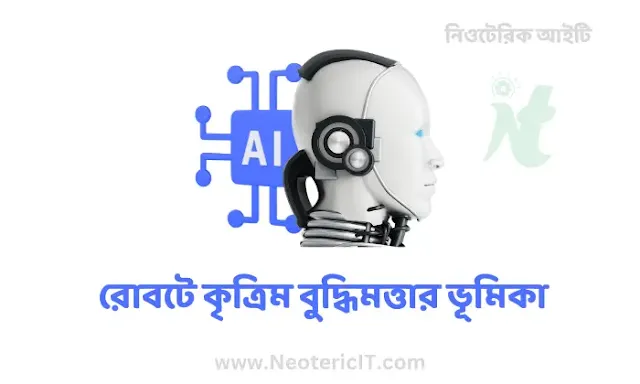Explain the role of artificial intelligence in robots
Hello dear guest - Welcome to Neoteric IT . You have come to Neoteric IT for information about Explain the role of artificial intelligence in robots Today I will conclude this article by discussing Explain the role of artificial intelligence in robots in detail. Search Google to know more about Explain the role of artificial intelligence in robots write Explain the role of artificial intelligence in robots or click here insightflowblog.com for visit. See the page Table of content for know the main topic of this article. Web story and AMP Version
Artificial intelligence (AI) has revolutionized the field of robotics. With the help of AI, robots can perform tasks that were once considered impossible or too complex to achieve. The role of AI in robots is to enable them to learn from experience, reason and adapt to new situations. In this article, we will explore the different roles of AI in robots, how AI enables robots to perform tasks, and the future of AI in robotics.
Explain the role of artificial intelligence in robots .
Robots are machines designed to perform tasks autonomously or with minimal human intervention. The first robots were simple machines that could perform repetitive tasks. However, with the advancement of technology, robots have been able to perform more complex and complex tasks. AI has played an important role in the evolution of robots. AI enables robots to think and make decisions like humans. It enables them to learn from experience, recognize patterns and adapt to new situations.
One of the primary roles of AI in robots is to enable them to perceive their environment. Robots need to perceive their environment to navigate and perform tasks. AI enables robots to perceive their environment through sensors such as cameras, lidar and radar. These sensors enable the robot to recognize and identify objects and people, navigate around obstacles and avoid collisions. For example, autonomous cars use lidar sensors to map their environment and avoid collisions.
AI enables robots to understand human language and interact with humans. Natural Language Processing (NLP) is a branch of AI that enables machines to understand human language. Through NLP, robots can understand human commands and respond appropriately. For example, Amazon's Alexa can understand voice commands and perform tasks such as playing music, setting alarms and ordering products online.
AI also enables robots to learn from experience. Machine learning (ML) is a branch of AI that enables machines to learn from data. With ML, robots can learn to recognize patterns and make predictions based on past experiences. For example, a robot designed to sort objects can learn to recognize different objects and sort them accordingly.
Another role of AI in robots is to enable them to reason and make decisions. With AI, robots can make decisions based on data and logic. For example, a robot designed to clean floors can use AI to decide which areas to clean first and how much cleaning solution to use.
AI also enables robots to adapt to new situations. With AI, robots can learn to recognize new objects and adapt their behavior accordingly. For example, a robot designed to pick and sort objects can learn to recognize new objects and sort them accordingly.
AI also enables robots to work together. With the help of AI, robots can communicate with each other and coordinate their actions. For example, a group of robots can work together to assemble a car or perform other complex tasks.
The integration of AI and robots has many practical applications. One of the most notable applications is manufacturing. Robots are widely used in manufacturing to perform tasks such as welding, painting and assembly. With the help of AI, robots can perform these tasks more efficiently and accurately. They can adapt to changes in production processes and improve product quality.
AI and robots are also used in healthcare. Robots can be used to perform tasks such as surgery and patient care. With AI, robots can learn to recognize medical conditions and adapt their behavior accordingly. They can work together to perform complex procedures.
Explain the role of artificial intelligence in robots - role of artificial intelligence in robots - NeotericIT.com
AI and robots are also used in agriculture. Robots can be used to perform tasks such as planting, harvesting and spraying. With the help of AI, robots can learn to recognize different types of crops and adapt their behavior accordingly. They can work together to accomplish tasks more efficiently.
AI and robots are also used in space exploration. Robots can be used to explore other planets and perform tasks such as drilling and collecting samples. With the help of AI, robots can adapt to the harsh conditions of space and perform more tasks
Thanks for read the post. You can also read the article in bangla - role-of-artificial-intelligence-in
You are indeed a valued reader of Neoteric IT. Thank you so much for reading Explain the role of artificial intelligence in robots article. Please let us know how you feel after reading this article.

 Follow Google News to get the latest Neoteric IT news
Follow Google News to get the latest Neoteric IT news 
.png)





Please comment in accordance with the policy - otherwise your comments will not be accepted.
comment url